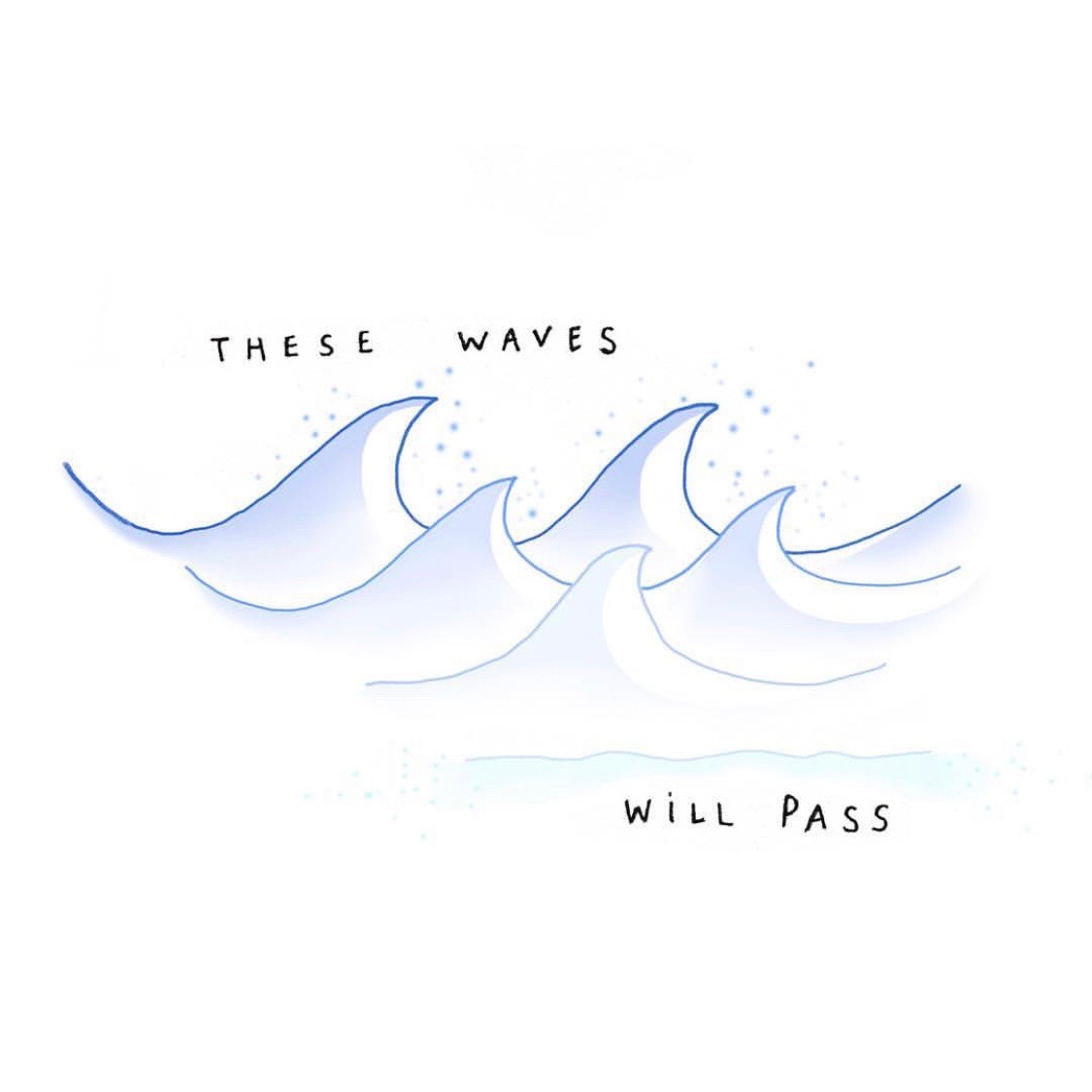4 Ways Yoga Helps Me Manage Life With Migraine
Sharing a blog I wrote for Yoga Wake Up + Cove about using yoga and meditation as a part of my migraine (and overall chronic wellness) management plan — link to the post here, or check it out below!
Yoga Wake up has partnered with Cove, an organization with a mission to make getting migraine treatment easier and more affordable with FDA-approved medications, ongoing access to your doctor through their secure messaging portal, and a progress tracker to help you take control over your headaches. You can click here to learn more about Cove, and get a special offer of 30% off your second month. Hopefully this partnership can help anyone experiencing migraine symptoms rest and wakeup a bit easier.
The evidence clearly shows that managing migraine effectively requires healthy coping tools for dealing with stress. If you are in that select group of the “one in seven” who lives with migraine, you know that a migraine attack can be a complete physical and psychological assault on the body and mind. It can rattle the nervous system, causing destabilization and turbulence throughout the body.

Whether you get one migraine attack a year, or three a week, it’s critically important to have tools in your arsenal to bring yourself back to a place of calm and peace after enduring a migraine storm. Enter: yoga and meditation.
Yoga and meditation are powerful practices that are accessible to you at any time. Incorporating them into your lifestyle in a way that works for you can have a large impact on how you flow through the challenging parts of life, and how you approach migraine management.
I use some form of yoga and meditation daily; whether it’s a handful of belly breaths while I rest in bed, seated stretches or gentle guided flows in the comfort of my own home. Currently, my health limitations keep me from attending yoga classes at studios. When this became “my norm” a few years ago, I felt discouraged and like I had to abandon yoga. I had enjoyed attending gentle, restorative yoga classes, but even this became impossible at a certain point.
Since then however, I have learned that “yoga” can be practiced in a wide variety of forms and that class attendance, length of time, or rolling your mat out in front of an instructor are not always necessary! I have completely shifted my paradigm of what a yoga practice looks like, and am intensely grateful for the Yoga Wake Up app, one of the most helpful tools which has helped me do so.
The many benefits of a yoga practice are well documented all over the internet, so I won’t repeat them here. Instead, I’d like to share four ways that a regular yoga practice has helped me manage chronic daily migraine:
1. Learning to love and appreciate my body
A migraine attack can make me feel like my body is fighting against me; that it is my enemy rather than my friend. I can’t tell you the number of times I’ve been “so mad at my head” when the intense ice-pick of pain wouldn’t let up, or felt “betrayed by my stomach” while fighting through intense nausea. Migraine pain can be all consuming, and it’s easy to feel nothing but frustration and anger towards our bodies for putting us through such agony.
But, every single time that I practice yoga, I find gratitude for all my body does do. I feel thankful for the legs that carry me so I can walk, the arms that support me in downward dog and the brain that calms with deep breathing and intentional movement. A regular yoga practice helps me cultivate love and appreciation for my body. As an added bonus, it also improves my flexibility, and helps me to feel more calm, self-aware and less anxious.
2. Building mental resilience

via @littlearthlings
Adapting well in the face of adversity, or during a struggle with our bodies, or when feeling intense pain, is hard. I have tried innumerable ways to cope with the daily battle of chronic, intractable migraine. The two tools which have been the most helpful in my effort to become more resilient in the face of these attacks are my yoga and mindfulness practices. My migraine journey has taught me that I can in fact do things that feel impossible.
In the midst of an attack, I so often hear that familiar phrase “I can’t do this anymore” repeating in an endless loop in my mind. In the early days of my migraine experience, that narrative “ran the show”. As I began to use yoga and meditation (often in tandem), I found that I could replace that phrase with more positive messages. Sometimes, the simple act of focusing on my breath, as I did gentle stretches in my bed, or on the floor next to it, let me step away from the pain, even if only for a second, and allow my mind to hear a new phrase; “you can do this”. Yoga has helped me to nurture a strength I didn’t even know that I had and I now find that in the moments of painful struggle, I can access that positive energy and use it to help me be more resilient. Practicing yoga has taught me how to increase my capacity for strong feelings and impulses in the moments when I am not experiencing a migraine attack and I find that the more that I practice, the easier it becomes to access that courage when I am in pain.
3. Activating the relaxation response
As many of you already know, a migraine attack activates our “fight or flight” response, (which is the opposite of the relaxation response). When that happens, our nervous system instantaneously (and automatically) switches to a high alert mode and our body reacts as if we are in mortal danger. Our nervous system doesn’t differentiate between types of danger. It activates the same “fight or flight” response whether we are being chased by a bear, or battling a migraine attack. When I learned about this, and really stopped to pause and think about the impact it had on my overall well being, it became clear to me that I had to find ways to signal to my body that it this was not a life threatening situation and it was okay to shift out of the “being chased by a bear” mode. Deep diaphragmatic breathing and gentle mindful movements through yoga are effective ways to let your body know that the nervous system can “stand down” and signal your body to activate the relaxation response – where digestion, healing, stress reduction (and so much more) happens on a cellular level.
4. Listening to my body and respecting its needs and limits
Here is your official permission slip to create your own yoga practice – it’s okay if your practice is vastly different from what you see on instagram, on tv, or in magazines and movies. Many days, my yoga practice is done from bed (thanks to the Yoga Wake Up app – “in bed” series!) Other days, it’s on the floor of my bedroom with the lights off and blackout curtains closed. Sometimes it’s in my sun-filled office next to an open window.
The point is, my practice is variable, flexible and ever evolving with my current circumstances. Yoga in bed counts as much as a yoga class in a studio. Two minutes of mindful breathing is better than zero minutes. Every person’s yoga practice can be fine tuned to fit the needs of whatever circumstances they are faced with on a given day or season of life, which is part of what makes it so beautiful.
I’d like to close with a quote that sums up the journey of learning how to use yoga for migraine management…
“In seeking health, I have discovered that there is no magical cure to migraine – even yoga. The best thing that yoga has given me is the ability to manage life in a better way. Through physical movement, breath practices, and meditation/visualization I have come to learn that I am not my migraines – they do not define me. This is a battle I fight every day, and there are many days when I feel that I am in a losing battle. But I live in hope instead of despair, because of yoga.” – Hannah Zerphey
Sources:
https://americanmigrainefoundation.org/resource-library/understanding-migrainetips-for-starting-yoga-in-adults-with-migraines/
https://migrainebuddy.com/relief/2018/9/17/yoga-migraines
May 7, 2019
Meet Natalie
I share each step along my road to wellness and healing and hope that in doing so I can inspire you along your own path. Thank you so much for being here.

Yasssssssss girlllll!!!
Respect What Your Body Needs